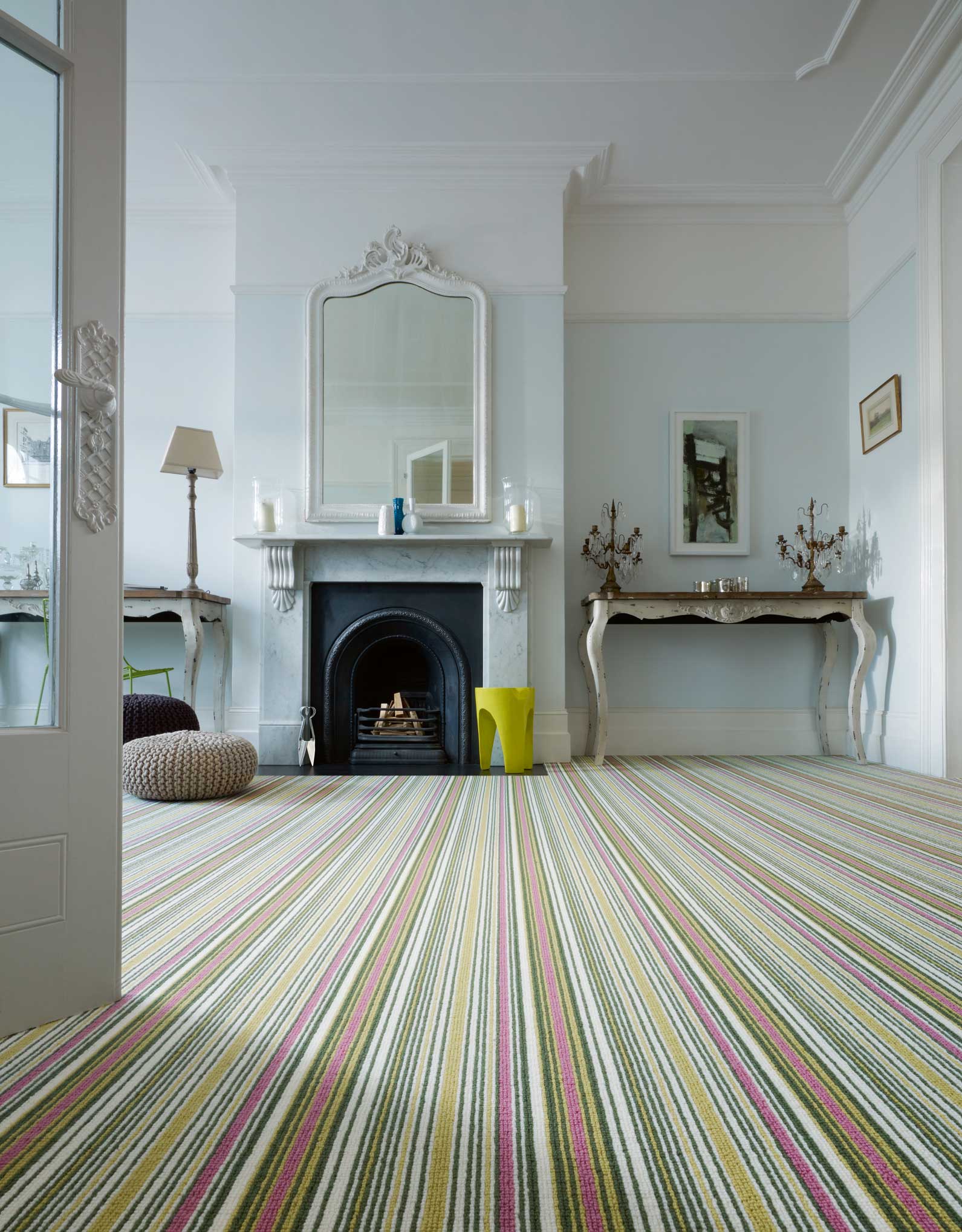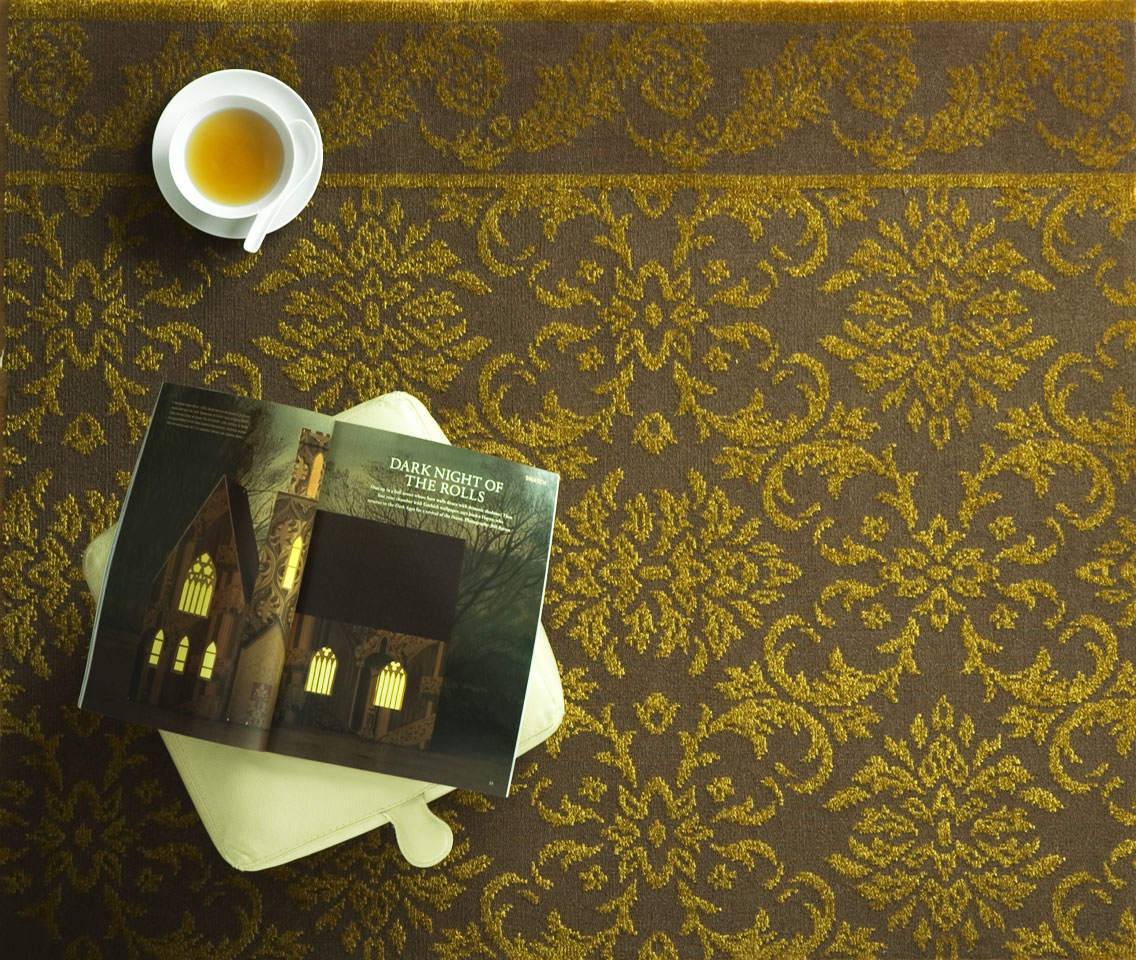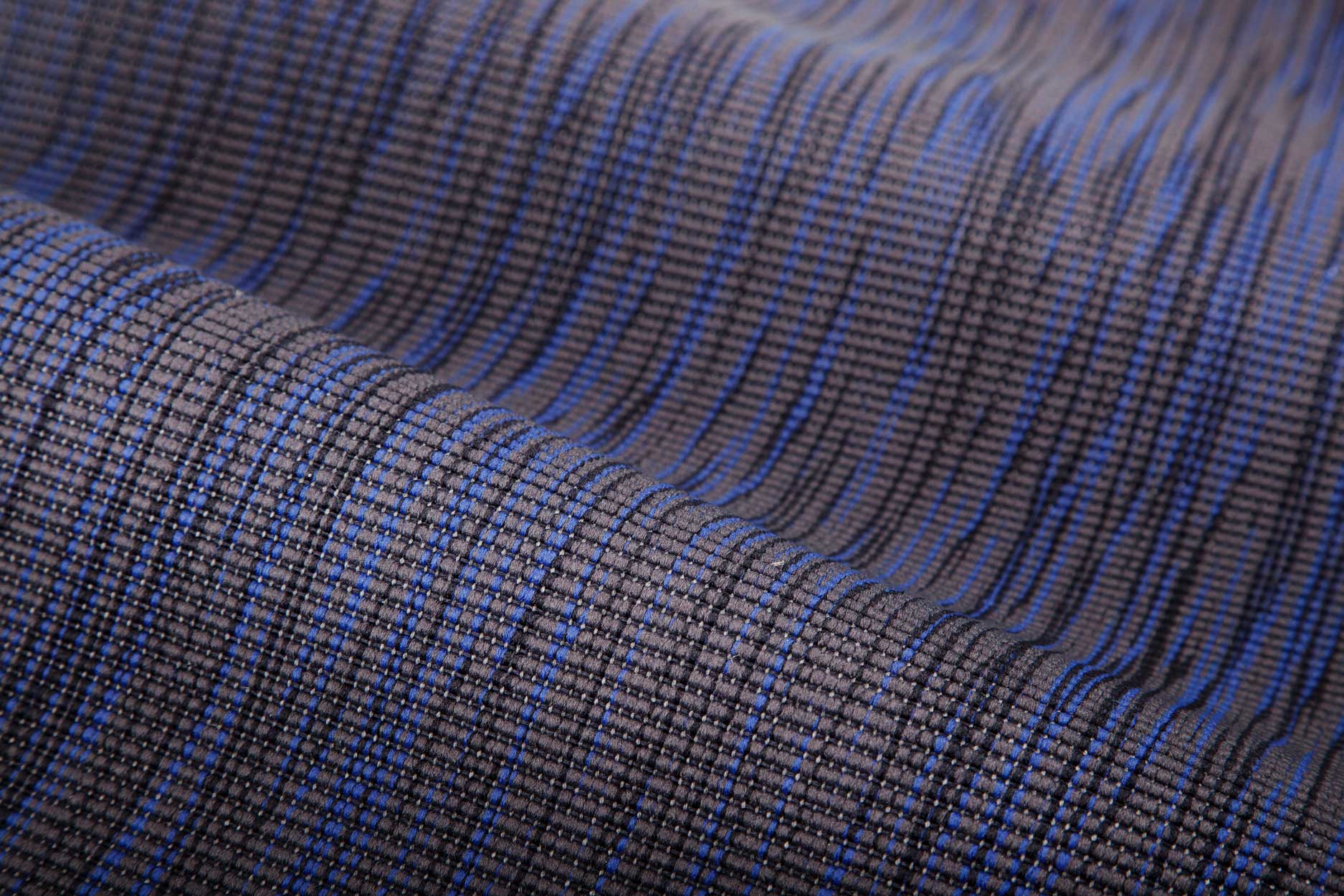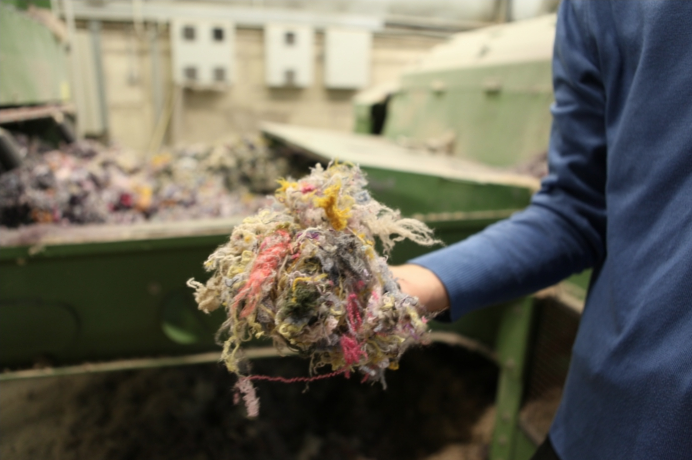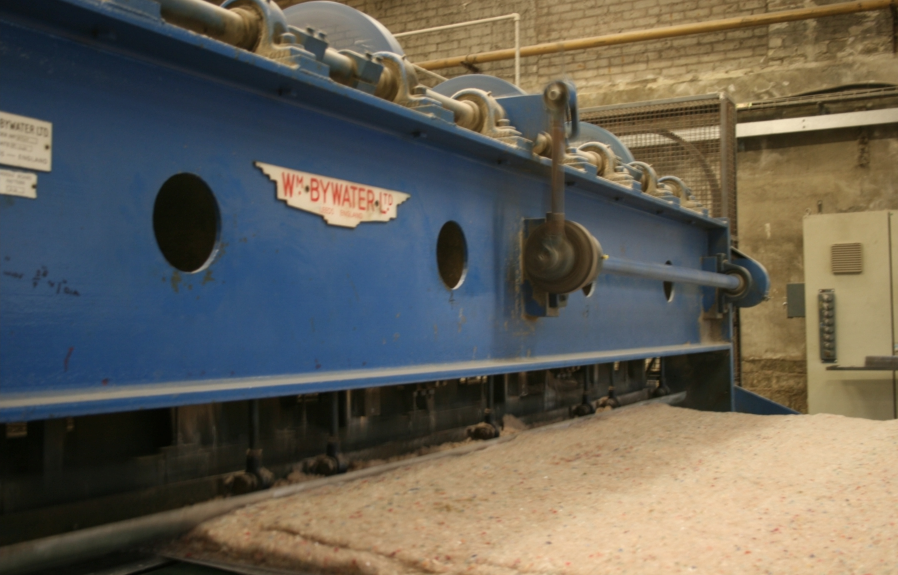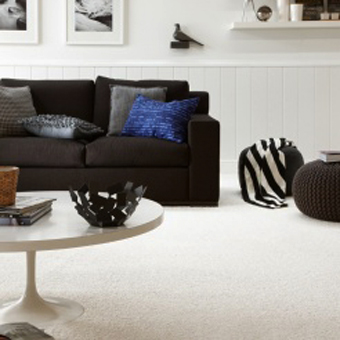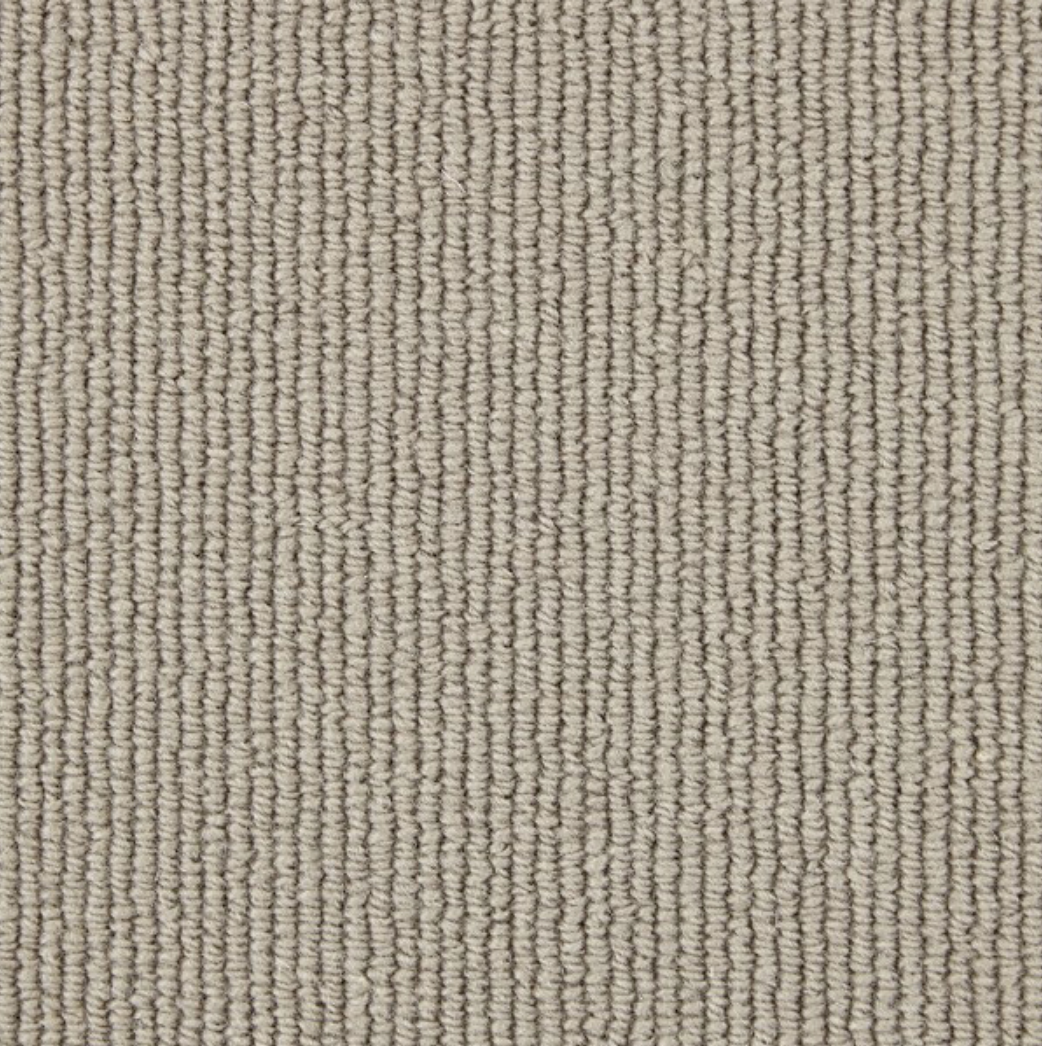Choose an eco-friendly carpet
New carpet is a delight. But it can be an environmental horror when its time comes to die. So are there eco-friendly carpets on the market? And what can you do with a dead one? Kay Hill investigates
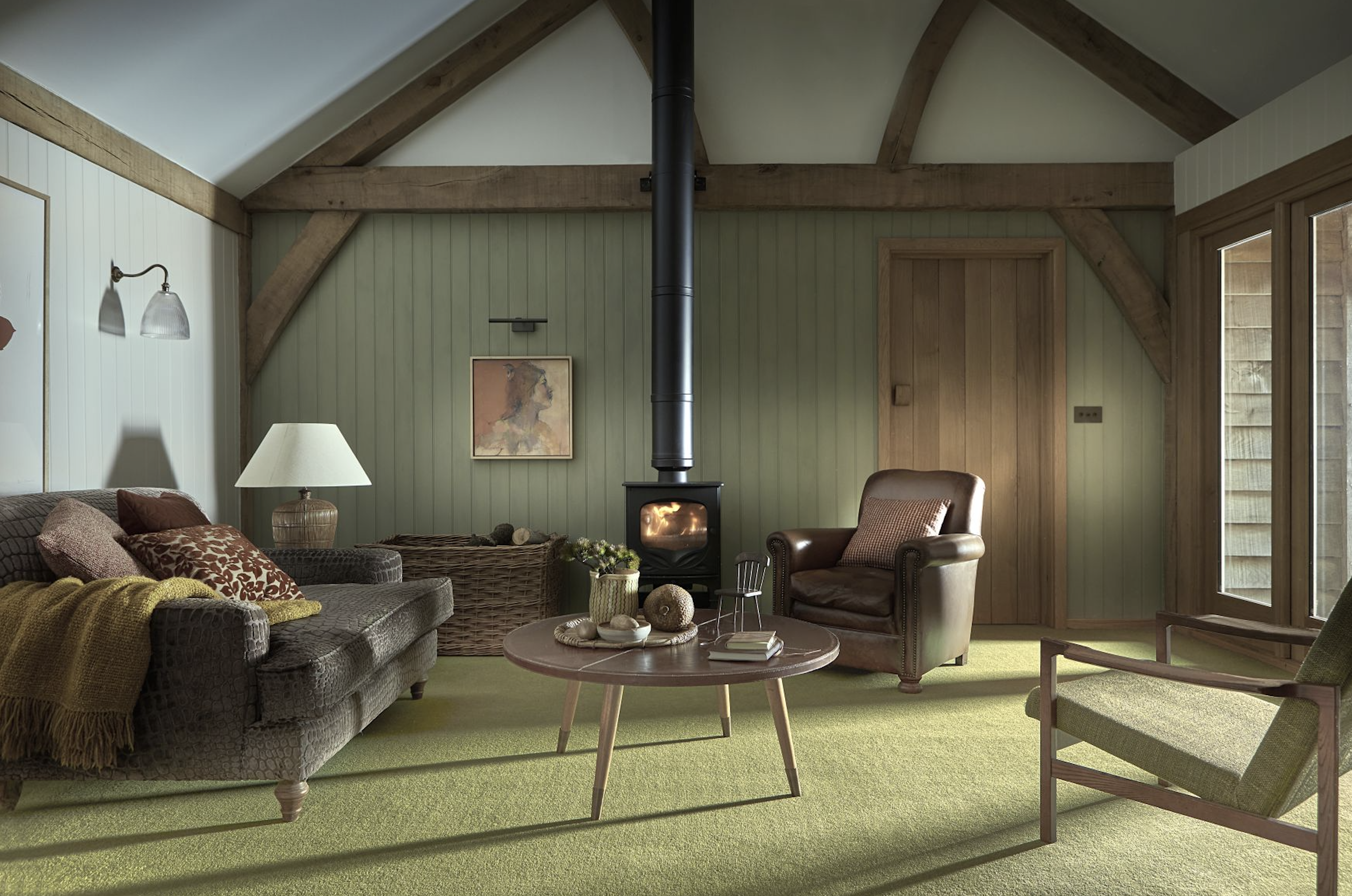
A carpeted space has a smoothness, softness and homeliness that other floor coverings can't match. 100 per cent wool carpets are undoubtedly a safe bet environmentally, because wool is naturally biodegradable; however for a more hardwearing carpet go for an 80/20, ie 80 per cent wool and 20 per cent nylon. Pictured above: Westex Penultima carpet 80/20 carpet in olive green, £35.99 per m2 at Carpetright. Wall to wall carpeting in sitting rooms and bedrooms is many people's preferred flooring for comfort, noise reduction and cosiness.
In all the excitement of the arrival of a lovely new floor covering, little thought tends to be directed towards the fate of the unloved and obsolete one – but we've got to start thinking about end of life issues when choosing carpets, and seek out eco-friendly ones.
Carpet recycling has improved a lot over the past five years, with around 165,000 tonnes of carpet waste going to landfill in the UK. That is a lot but it's down from some 400,000 tonnes 10 years ago, so it shows we're moving in the right direction. But still that carpet is buried in landfill, and since the majority of carpets are made from polypropylene, nylon, or wool and nylon blends, that means a lot of non-biodegradable waste cluttering up landfill and causing problems for future generations.
The industry is cleaning up its act
Carpet Recycling UK is a scheme funded by a group of UK carpet and flooring manufacturers, which aims to find innovative solutions to the waste problem. Supported by names including Vorwerk, Mohawk, Milliken, Forbo and Abingdon Flooring, scheme manager Jane Gardner and her team aim to find new uses for recycled carpet, facilitate relationships between waste recyclers and carpet producers and raise awareness of the problem.
'In 2008 just two per cent of carpet waste was recycled,' she says. 'By 2012 we were recycling 21 per cent and today it's around 40 per cent. More and more local authorities are now separating carpet waste for recycling, with a significant increase in recent years.'
Some 165,000 tonnes of carpet is thrown away annually in the UK
What happens to discarded carpets? find out here
New carpet offcuts become underlay
At Anglo Recycling Technology in Lancashire, MD Andy Hall oversees the recycling of 25 tonnes a week of carpet waste. One of his biggest successes was to forge an alliance with John Lewis to collect all the scraps and offcuts from its fitters. The wool and wool/nylon blended offcuts are turned into eco-friendly carpet underlay which is then sold back to John Lewis for use by its fitters. 'At the moment we're recycling post-industrial and post-fitter waste,'says Hall. Which is new carpet, not yet customers' old carpets. So, he says, 'The biggest challenge is to develop recycling for post-consumer waste.'
When we have carpet to get rid of, many of us still simply take it to our local council recycling centre, three-quarters of which do not sort carpet but simply put it into landfill – not a problem if it’s a naturally biodegradable product like pure wool, jute or sisal, but no good at all if it’s man-made. In cases where carpet is sent by local authorities for recycling, around half of it is burned and used as an energy source in waste-to-energy schemes, while the other half is properly recycled into useful products.
'The problem with recycling post-consumer carpets,' says Hall, 'is how do you cope with the ones that are soaking wet, or stink of cat wee, or are made from something that we can’t identify?'
None the less, meetings are currently underway between Hall, (chair of the board of directors at Carpet Recycling UK), the BRE and government body the Technology Strategy Board, to find ways around the problems.
'It’s important that people start recognising the problem and developing a solution, as DEFRA (Dept for Environment, Food and Rural Affairs) is already looking at possible legislation on the subject,' warns Hall.
Think wool
Asked what is the most eco-friendly carpet choice, recycling boss Andy Hall is very clear: 'I would stick to a wool-based carpet with wool from a reputable company like Wools of New Zealand, as it’s grown naturally and is sustainable and very recyclable.'
High end UK carpet and rug designer Roger Oates agrees: 'Wool is the ultimate eco natural material as it’s from a naturally renewable source and is fully sustainable. The structure of the fibre acts as a natural shield against dirt, and as it's inherently fire retardant no additional chemical treatments are needed. It is extremely durable, but at the end of a long life it can be recycled or, because it is biodegradable, it can be composted.'
And where facilities exist, wool can be chopped up and mulched into the soil as a natural fertiliser or it can be recycled into products such as underlay and insulation.
Roger Oates' new Cheviot Collection uses wool from British Cheviot sheep which is spun by English wool spinners, woven in British mills and hand-finished in Herefordshire to produce a product which is biodegradable and doesn’t waste carbon on transport. Because the carpets are woven, they don’t have a backing, making recycling easier.
While British wool comes in lots of interesting natural colours, New Zealand wool is famed around the world for its pure white colour that takes dye beautifully. Now Wools of New Zealand has launched its premium Laneve range, which offers carpet-to-farm traceability and guarantees that farmers meet a comprehensive range of environmental, social responsibility and animal welfare standards. Buyers of a carpet made from Laneve are given a special code that they can enter online to see which farm the wool came from.
The Laneve wool has been picked up by a number of manufactures, from Crucial Trading, which uses it for its modern, striped Biscayne carpet, to Ulster Carpets’ Wellington Stripe, to the elegant sculptured Portland and Perendale carpets from Flock.
Crucial Trading's general manager Michael Turner points out that a wool carpet takes only around an eighth of the energy to produce that a nylon carpet uses, while Ashoke Sethia, MD at Flock says 'our main aim is to provide nothing but the best quality wool carpet in contemporary colourways, textures and patterns. Our search took us to Laneve because of its ethical ethos.'
Belgium's Louis de Poortere makes superb quality 100 per cent wool carpet, some with jute backing, making the product eminently biodegradable.
Poly what?
Nylon carpet used to be considered cheap and nasty. But times have certainly changed and there are some beautiful nylon carpets available, in soft, subtle colourways not always associated with wool carpets.
Ian Hammond is UK director of Vorwerk, the German flooring company that specialises in hi-tech nylon carpeting for homes and carpet tiles for businesses. The company recently launched its Eco Balance commitment which aims to give priority to environmental and social responsibility, and has made big strides in improving the sustainability of nylon carpet.
'The thing about nylon is that it is really sustainable because it has such good performance and it’s so hard-wearing,' says Hammond, pointing out that a good quality nylon carpet will outlive a wool blend and remains stain resistant and easy to clean throughout its life. It looks good, too: 'If you touch a high quality nylon carpet you would never believe that it is a synthetic material, it feels like wool. Synthetic material carpets have been tarnished by the poor performance of polypropylene which is not a very resilient material; but we are using polyamide, a completely different ‘poly’.'
Vorwerk uses a unique cold-dyeing process that uses 90 per cent less steam and 70 per cent less water than conventionally hot-dyed products, and it has also removed all the chalk normally present in synthetic latex backings, resulting in a product that is 500g per m2 lighter and more flexible, cutting energy use during transportation. More importantly, it enabled offcuts to be burned for energy without producing toxic fumes. Vorwerk also uses 30 per cent recycled polyethylene in its carpet backings.
And Vorwerk offers carpet made from Econyl nylon which is recycled from old fishing nets, but this has to be ordered in such bulk that it is not yet suitable for residential customers.
Another company using Econyl is high end Dutch carpet company MID. 'We offer 100% recycled Econyl yarn for our new contract collection, but when it comes to residential customers it is all about the aesthetics and price,' says Mark Van Koningsveld, sales and marketing manager at MID. 'Architects and designers want to make the whole building green, from the water to the furniture, so the commercial world is very much further ahead in terms of eco-friendliness than the residential market, which likes the concept but doesn’t want to pay a different price for it.'
Koningsveld is pragmatic: 'We need man-made fibres, and if we need them let’s make them as environmentally responsible as possible.'
But for Andy Hall at Anglo, nylon is the most problematic carpet to recycle – fine in the small quantities of an 80:20 carpet, but complete nylon carpets cannot currently be made into anything saleable in the UK.
For global contract flooring brand Interface, which caters for contract interiors, recycling research continues apace and it's been focusing on making carpet tiles from discarded fishing nets. It is also involved in recycling and repurposing carpet tiles, and you can read about its ReEntry programme here.
For super soft carpet for the home with a 20 year guarantee, Sedna Carpets has a good range of carpets made from Econyl.
US is recycling Nylon 6
Elsewhere in the world that is changing, though. And in the US there are already facilities to recycle Nylon 6, the highest quality filament, and now this is up and running in Europe via a plant in Slovenia owned by Italian company Aquafil Group.
Its Econyl Regeneration System produces the sought-after Nylon 6 polymer to make new Econyl carpets by recycling not only fishing nets, but also the pile from old nylon carpets and rugs, presenting a tantalising glimpse of the closed loop system that could one day exist worldwide.
New kids on the block
As customers look for more green features in their carpets, so manufacturers are rising to the challenge, with products such as Mohawk’s SmartStrand, a man-made carpet in which just over a third of the fibres are made from renewably sourced corn polymer from maize.
Vice president of international sales Howard Lyndsey explains: 'It used to be that if you wanted an environmentally-friendly carpet, you'd have to compromise on texture, with many recycled content fibres being surprisingly coarse and not so comfortable underfoot, as well as being difficult to clean and maintain.
'SmartStrand carpet has the luxurious feel, long-term life and stain resistance of nylon carpets but uses 30 per cent less energy it its production.'
Belgian group Balta is increasingly using recycled PET yarn in its carpets and is focusing on recyclability. 'Balta Home has taken a significant step towards a circular life cycle product with the New Generation range of rugs. Made from a single polymer to ensure easy recycling, the collection is a major step as some qualities are also made from 100% recycled PET,' the company says.
Ege Carpets is one of the most eco-friendly companies to buy from as they take sustainability very seriously and have18 Cradle to Cradle certifications. They produce several beautiful collections made from Econyl and also manufacture wool carpets
Mohawk also offers the completely recycled and very affordable EverStrand carpet. According to Lyndsey: 'It's possibly one of the most environmentally friendly man-made carpets you can buy. Made entirely from post-consumer recycled plastic drinks bottles, the manufacture of EverStrand carpet fibre has diverted almost three billion plastic drinks bottles from landfill sites every year.
'In the production process, the bottles are recycled into PET chips, which are then extruded into EverStrand fibre to make durable, soft and sustainable carpet.'
Also making use of old plastic bottles is Manx Tomkinson, whose EcoStyle range is made from 90 per cent recycled PET and 10 per cent wool. In theory the old carpet could be returned to PET chips and remade, but closed loop systems don’t yet exist, so the best case scenario is that in areas with carpet recycling facilities, it will be made use of as lower grade products in its next life.
Finally, for recycling at the very luxurious end of the market, the offcuts of vibrant silk from Indian sari factories have been transformed into delicately beautiful rugs and runners at Top Floor for silk flooring with a conscience.



